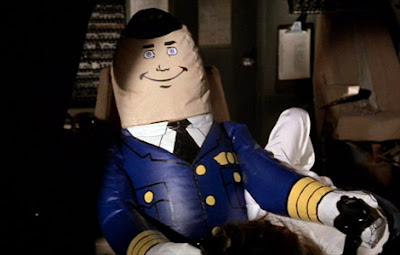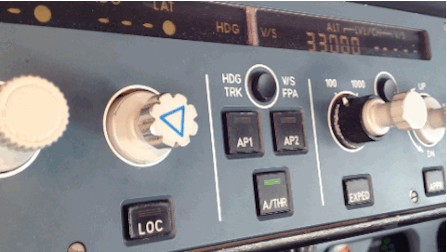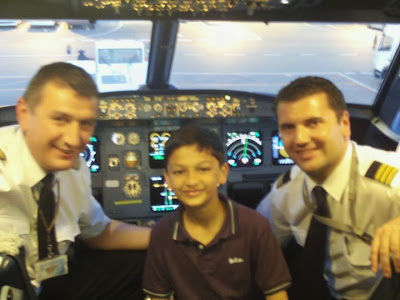#blog #aviation #avgeek #newyearsresolution
HAPPY BIRTHDAY, WORLD!!!
It's been an adventure, to say the least! Look for my "Best of" links below, after today's post!
Speaking of which . . .
HAPPY 100 Commercial Aviation!
100 years ago on January 1, 1914, the world's first airline pilot Tony Jannus conducted the United States' first scheduled commercial airline flight on January 1, 1914 for the St. Petersburg-Tampa Airboat Line!
Here's a cool link about it with some fun pics: http://www.businessinsider.com/1914-first-commercial-flight-price-anniversary-2013-12
and now . . .
It's Blogging in Formation Week!
New for 2014: 2 BiF posts/day, from 1 GA pilot & 1 Airline pilot!
New for 2014: 2 BiF posts/day, from 1 GA pilot & 1 Airline pilot!

Jan. 2: House of Rapp - Ron Rapp
Adventures of Cap’n Aux - Eric Auxier
Jan. 3: iFLYblog - Brent Owens
And please Welcome Aboard our newest Blogging in Formation member, Mark L. Berry!
Mark blogs at: http://marklberry.com
See more about Mark after this post, below!
This Month's Theme: My New Year's Resolution!
So, let's cut to the chase . . .
My New Year’s Resolution:
Turn off the *&^% and Fly!
As most of you know, I recently wrote an article for nycaviation.com entitled, Do Commercial Pilots Really “Suck” at Manual Flying? (http://www.nycaviation.com/2013/11/commercial-pilots-really-suck-manual-flying/#.Uqkg5pFItFw)
In it, I detailed a new FAA study which posits that the “greatest risk” in today’s cockpit is 1.) Over-reliance on automation leading to complacency, and 2.) Lack of understanding of automation, leading to a reluctance to, well, “Turn off the magic and fly.”
While I take issue with the FAA’s premise that it’s “our greatest risk” (see an upcoming NYCA post where I, Karlene Petitt and others write about pilot fatigue), I did generally agree with the above two points.
________________________
Today’s airliners are six times safer than your own bathtub.
________________________
Today’s airline pilots fly the safest airplanes in history. They are the best-trained pilots in the world, operating in an environment that has become six times safer than your own bathtub. But pilots are human, and therefore prone to human error.
ANATOMY OF AN AIRLINE FLIGHT
You board your plane,
take your seat,
strap in.
The door closes.
The plane pushes back.
In the cockpit, what’s happening?
________________________
You board your plane, strap in. The door closes.
In the cockpit, what’s happening?
________________________
In a nutshell:
—After the tug disconnects and the engines are started, the Captain taxies the plane out to the active runway. He steers with his hand tiller and stops with the toe brakes on his rudder pedals.
—Cleared for Takeoff: The PF (“Pilot Flying”—either Captain or First Officer) takes the controls, runs the thrust up, steers with the rudders. The PNF (“Pilot Not Flying”) calls, “V1…Vr…” The PF rotates (pulls the stick back), the plane lifts off and flies.
—PNF: “Positive Rate” PF: “Gear Up” The PNF raises the gear handle and the landing gear sucks up into the gear wells.
At this point, 95% of the time for 95% of the pilots, the PF engages the “Autopilot.” (On the new RNAV departures, this is actually required for precision maneuvering.)
 |
| The infamous "Otto Pilot!" |
From here on out, except for special cases, the airplane is flown entirely on autopilot. While most modern aircraft can “autoland” (land on autopilot), most of the time the PF disconnects the autopilot—usually somewhere in the neighborhood of 1,000’ AGL—and lands manually.
Make no mistake, at all times while the autopilot is engaged, the PF is “flying.” That is, s/he is telling the autopilot what to do.
________________________
For airliners, flying is nothing.
Managing the flight is everything.
________________________
Think of today’s autopilot as a fancy, 3-D Cruise Control. You use your CC in the car to relieve you from the mundane burden of constantly adjusting the accelerator.
This frees his mind up to take in the “Big Picture”—watch for other traffic, monitor the radio frequency, monitor performance and deal with other issues.
This type of flying—monitoring an autopilot—may not seem as romantic as Luke Skywalker “keeping it on manual for a while,” but believe you me, this is the safest way to travel.
As I’ve said in the past, When it comes to airliners, flying is nothing. Managing the flight is everything.
 |
| "I just want you to know: we're all counting on your Otto-Pilot." |
Here’s the problem—and this is one of the main points the FAA is driving at:
all this “managing” and no “flying” makes Jack a dull pilot.
In Fifi (our affectionate name for the Airbus), this is doubly true.
________________________
All this “managing” and no “flying” makes Jack a dull pilot.
________________________
Those who have taken basic flight training know that there are several controls you constantly have to manage:
—the stick, or yoke, controlling up/down, right/left.
—the rudder pedals, coordinating turns with the stick to keep the plane flying efficiently (also used for directional control on the ground, and for landing in crosswinds.)
—The flaps, helping you to continue flying while slowing down (on larger aircraft, this will include leading edge slats as well.)
—The trim, or trim wheel, which helps relieve control pressure when changing speeds, pitch, flaps, etc.
________________________
Today's airliners have the six basic flight instruments
consolidated into one CRT screen.
________________________
 |
| traditional flight instrument stack |
Back in the Day, to keep the plane upright, we would have to constantly scan six flight different instruments—Airspeed Indicator, Attitude Indicator, Altimeter, Turn Coordinator, Heading Indicator, and VSI (Vertical Speed Indicator).
One of the biggest challenges for student pilots is learning how to scan these six instruments.
One of the biggest challenges for student pilots is learning how to scan these six instruments.
 |
| B-737 EFIS |
Today, most modern airliners—and now many GA airplanes—have an “EFIS” system (Electronic Flight Information System.)
Basically, one or two EFIS CRT screens consolidate and replace all six "hard ball" instruments. Just like an autopilot, EFIS helps free a pilot up from the mundane distraction of driving.
As an inevitable result, however, we EFIS pilots’ basic “scan” has gone to holy hell.
 |
| SWA Cap'n David in his Cessna 310. Note the 6 "hardball" flight instruments. . . and the state-of-the-art, digital, dual GPS navaids! |
Recently, I got a chance to fly with my Southwest airline buddy David in his “Captain’s toy,” a twin-engine Cessna 310. A beautiful machine, it’s been my reintroduction back to GA flying. Frankly, it’s been about 15,000 flight hours since I’ve had my hands on a GA yoke. And I must say: along with my scan, my basic stick and rudder skills have become mighty rusty!
________________________
In the Airbus, we just Point and Click!
________________________
 |
| Sailing the A321 into the sunset. |
We in the Airbus series of aircraft have it even easier.
Even while hand-flying with the Airbus autopilot off, the plane’s computers:
—Coordinate the turns for us; no rudder input required.
—Trim the plane for us; no trim wheel adjustment required.
—Adjust the throttles for us; no movement of thrust levers required during flight. *(see note about Autothrust vs. Autothrottles, below)
As my jumpseater said the other day, in the Airbus, we just Point and Click!
While Fifi is on Autopilot, we have two main choices: Select or Manage. When we select something, we are manually telling her what to do—fly a desired heading, speed, climb rate, etc. In other words, it’s your standard, run-of-the-mill autopilot—the 3D Cruise Control.
When we Manage the flight, Fifi decides what she wants to do (fly a given speed, route, track, etc.) All the PF does in this case (backed up by the PNF) is sit back and monitor, making sure she flies the desired track and flight profile.
Again, today's autopilots do such a good job at flying that it’s listed as one of the FAA’s beefs: pilots can become complacent, and fail to properly babysit the plane . . .
And Cap'n Aux, being a mere mortal, is no exception.
So, to get me back 100% in the loop, dust off the rust and resharpen those waning skills, I’ve come up with my New Year’s Resolution:
TURN OFF THE MAGIC AND FLY!
In the Airbus, this will mean:
—Clicking off the Autopilot at Top of Descent and hand-flying ‘er in. (I always manually land unless it’s a CAT II or III approach, in which case we are required to Autoland.)
—Clicking off the Autothrust at the same time. This means the quaint old process of manually moving those levers like conventional throttles.
—Hand-flying ILS instrument approaches to minimums (one of the most satisfying things you can do in an airliner!)
—As for my scan, I guess I’ll just have to borrow Cap’n David’s Cessna 310 for awhile, to get used to those “classic steam gauges” again.
Thanks in advance, Cap’n! :D
*A note about Autothrust: In the Airbus, regardless of whether Autopilot is On or Off, the Autothrust is normally on. Furthermore, we actually have “Autothrust,” which is different than the standard “Autothrottles.” Normal Autothrottles, such as is found in Boeings, physically move with power changes. In the Airbus, we select one of several detents for the desired power setting—TOGA (Takeoff/Go-Around), FLX/MCT (Reduced takeoff setting/Max Continuous Thrust), or CL (Climb). Once we pull the thrust levers back from a takeoff to a climb, during a normal flight, the thrust levers do not move again until the pilot pulls them to idle for touchdown—or Authothrust is selected OFF and flown manually.
— — — — — — —
Everyone, please join me in welcoming aboard
our new Formation Blogging Team member,
Captain Mark L. Berry!
Captain Mark blogs at marklberry.com
and will be posting his first blog for us (concurrently with Brent Owens) tomorrow!
— — — — — — —
Happy 2nd Blogiversary, everyone!
My first-ever post, A Pilot Looks at Twenty, was a recap of my unbelievably adventurous flying career.
Here's the updated version, posted on my 50th birthday back in 2012, entitled, A Pilot Looks at 50: http://capnaux.blogspot.com/2012/06/pilot-looks-at-50.html
Coming soon: Best of Cap'n Aux, 2013!
In the meantime, here's a link to the "Best of Cap'n Aux, 2012":
I declare 2014 . . .
Year of the "Aux!"
— — — — — — —
Cap'n Aux Blogging in Formation Posts
- My Favorite Destination: http://capnaux.blogspot.com/2014/02/blogging-in-formation-my-favorite.html
- What I Want Under the Christmas Tree—http://capnaux.blogspot.com/2013/12/blogformation-what-i-want-under.html
- Aviation History: Captain Grace Baloyo—http://capnaux.blogspot.com/2013/11/blogformation-aviation-history.html
- My Most Instructional Moments—http://capnaux.blogspot.com/2013/10/blogging-in-formationthere-i-wuz-my.html
- If I Had 1 Wish for Aviation—http://capnaux.blogspot.com/2013/09/formation-blog-if-i-had-1-wish-for.html
- Stranger Than Fiction—http://capnaux.blogspot.com/2013/08/blogformation-stranger-than-fiction.html
- The Future of U.S. Aviation—http://capnaux.blogspot.com/2013/07/happy-4th-future-of-us-aviation.html
- My Most Memorable Flight—http://capnaux.blogspot.com/2013/06/blogformation-my-most-memorable-flight.html
- How I Was Brought to Flying—http://capnaux.blogspot.com/2013/05/blogging-in-formation.html
- Do Commercial Pilots Really “Suck” at Manual Flying? http://www.nycaviation.com/2013/11/commercial-pilots-really-suck-manual-flying/#.Uqkg5pFItFw
- NTSB briefing on Asiana 214 KSFO accident http://www.nycaviation.com/2013/12/commentary-ntsb-briefing-asiana-214/#.UqoRO5FItFx
- The Future of U.S. Aviation—http://capnaux.blogspot.com/2013/07/happy-4th-future-of-us-aviation.html
- Busted Aviation Myths—Otto is My Copilot http://capnaux.blogspot.com/2012/05/busted-aviation-myths-2-otto-is-my.html
- Vlog: Let's go for a (Simulated) Airplane Ride! http://capnaux.blogspot.com/2013/03/vlog-lets-go-for-simulated-airplane.html
- A Pilot Looks at 50 http://capnaux.blogspot.com/2012/06/pilot-looks-at-50.html
- Best of Cap'n Aux, 2012 http://capnaux.blogspot.com/2013/01/2012-recaptop-capn-aux-posts.html
- Pilot Factor—Know Your Limits! http://anthonyandnancy.com/thepilotfactor/team-cohesion-stress-skills-training-play-strenghts-know-limits/
- Wiki: EFIS Systems http://en.wikipedia.org/wiki/Electronic_flight_instrument_system
- AvWeb on EFIS study http://www.avweb.com/blogs/insider/AvWebInsider_EFIS_202157-1.html
POST-FLIGHT CHECKLIST
- JOIN THIS SITE....................VERIFY.............................JOINED
- COMMENT............................VERIFY.............................MADE
- FACEBOOK...........................VERIFY.............................LIKED
- TWITTER...............................VERIFY.............................TWEETED
- EMAIL....................................VERIFY.............................MAILED
- OTHER NETWORKS............VERIFY.............................SHARED
POST-FLIGHT CHECKLIST.......................COMPLETE!
Blogging in Formation Week—
Posts by your favorite Pilot-Bloggers, beginning Feb. 1!
Posts by your favorite Pilot-Bloggers, beginning Feb. 1!

— — — — — — —
NOW BOARDING
Departing in February
The Best of Cap'n Aux, 2013!
— — — — — — —
DID YOU LIKE THIS POST? Me too!
If so, I invite you to COMMENT, SHARE, TWEET, LIKE, EMAIL & +1 etc., below!
vRight down below this line!v


























Eric,
ReplyDeleteWhat a great post! You distilled this issue down to the nuts and bolts so people can actually understand the issue. I agree that automation needs to be used in balance with keep your skills sharp. Kudos on your resolution too! Taking the initiative to hand fly more, will no doubt pay off.
Brent
Thanks, Brent!
DeleteYes, I wanted this to be a real Flying 101 to bring everyone along for the ride. I was skeptical about rusty flying skills but have learned first hand it's true. Karlene is a real champion of this, and I'm getting on board with it!
Thanks for the comment!
Love your resolution Eric! It's my leg into Osaka tonight. This will be my first time in the Bus... and the other two pilots have never been there. I will be landing at 0400 my body clock... but at night, after 19 hours awake. And I have flown twice in six months. Automation or not? :) Tis the question of the year!
ReplyDeleteI love this. And I too will make this a resolution too! Happy New Year.
Karlene,
DeleteHaving just read a preview of your soon-to-be released novel "Flight for Safety," I can definitely say that your books mirror truth!
Enjoy that 1st time, backside of the clock landing! You should probably let Fifi do that one, and catch up on the manual practice on a shiny day back in the States!
Thanks for the comment!
Automation is a great debate on this side of the Atlantic as well.
ReplyDeleteAirlines push us more and more to use the automation, which - they believe - allows us to manage the flight in a more efficient way while looking out for VFR traffic (a lot of commercial flights go through uncontrolled airspace in Europe).
I'm lucky enough to do short flights (30-40 min airborne). With a few Captains, we do not engage the autopilot for the whole flight and we usually fly raw data with no autothrottle either. As to the VNAV path, we usually hide it (with a piece of paper on the ND) to force our brain to work - for once.
Not only is this enjoyable but it really helps with the basic skill of "flying", actual flying.
For the first time ever, there was some manual flight training in my last recurrent simulator training/check.
Interesting move.
Thanks for the great post Eric!
Thanks for the input, GolfCharle! Always great to see you here!
DeleteGlad to hear you are getting some good manual and raw data flying in. I think that is the trend we will be seeing in training over here as well.
I always thought it would be cool to fly for Alaska Airlines, because they fly lots of approaches (or used to) into remote strips doing raw data NDB's, etc. Now that's real flying! :D
So easy to get complacent flying point A to B on the cruise control all the time...
Thanks for the comment, GC232!
You want to meet with a lawyer without meeting them. Hiring someone you’ve never met can be a good decision. Meeting will let you how comfortable you will both be with each other.
ReplyDeletehealthyclayton |
homesalespotomac |
hospital-logiserve |
howtogreenyourhouse |
idahohomehealthcare |
Thanks for sharing this quality information with us and i like this. I hope you post again soon.
ReplyDeleteSignature:
i like play games juegosjuegos.com and play games jogos do friv and play games juegos de matar zombies online free.
i love your blog
ReplyDeletekeep up the good work
http://www.copypasteads.com
I just want to say thanks for your wonderful post, it is contain a lot of knowledge and information that i needed right now. Thanks!
ReplyDeletejuegosfrival.com , friv400game.com , friv2gamers.com
AvaHost is ultimately the best web-hosting company for any hosting plans you might require.
ReplyDeleteI think we all like to thank so many good articles
ReplyDeletehot girls sex